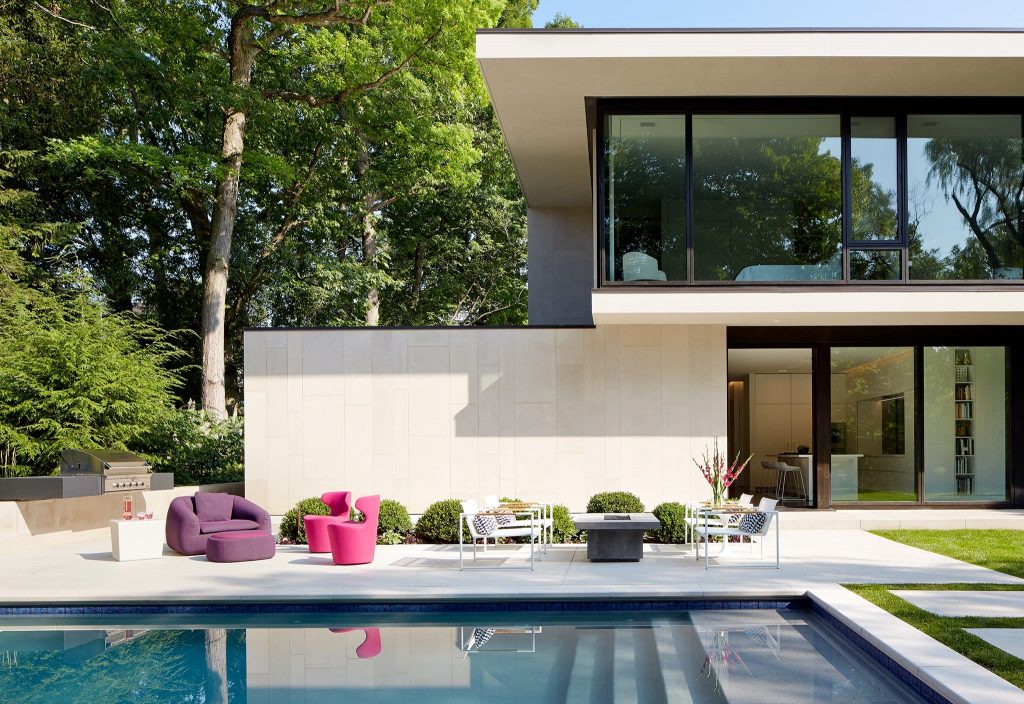
The Ravine House gets its name from its unique location along Lake Michigan. Impressed with previous work by Robbins Architecture, the homeowners, a young couple, got in touch to talk about their desire for a modern family home. Avid art collectors, the clients wanted to display their collection as well as express their love for design.
Treating the beautiful ravine backdrop as an art piece in itself, Robbins Architecture embraced the surrounding landscape, fusing it into the design of this stunning modern home. We caught up with Celene Robbins for more details about the project.
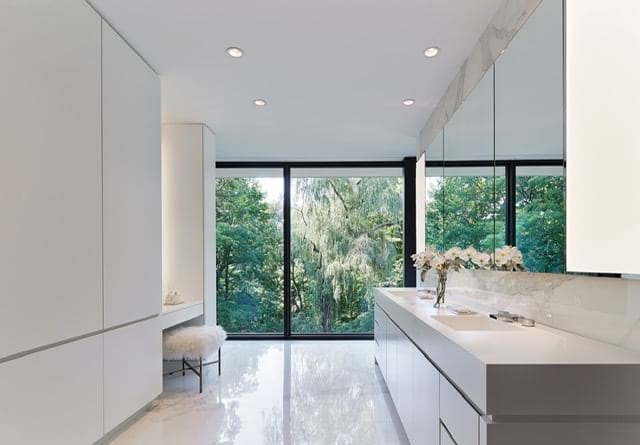
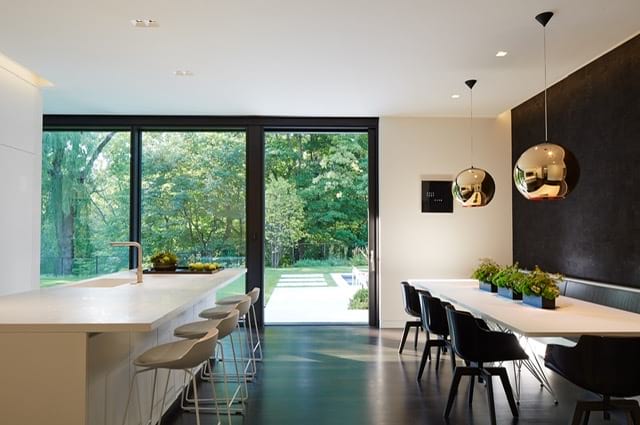
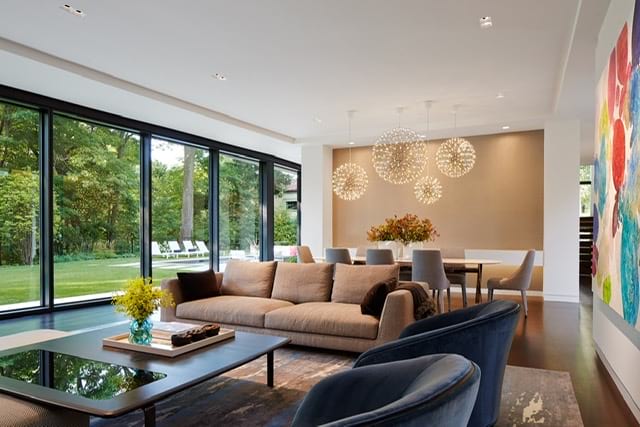
Can you tell us a bit about the story of this house/project and its owners?
The owners are a young couple that wanted a home that reflected their love of art and modern architecture without sacrificing comfortable family space for their two children, 6 and 8 at the time. The husband and wife contacted us after viewing another ravine project we had recently completed.
Sometimes we must spend time with the clients before their preferences become clear, but in this case the owners knew they wanted a modern house.
The wife played an active role in the design process; poring over magazines, sharing ideas, and stopping by our office to discuss her latest magazine and vacation discoveries. It sounds trite to say we had a lot of fun, but we both enjoyed sharing our passion for design.
What was the first question you asked yourself when you got the assignment?
The site featured two contradictory environments, so we first questioned how to design a cohesive house with such different site constraints on each side. The front was close to the street, while the back had an expansive woodland ravine view. We needed to find a way to blend a façade that required privacy facing the street and expansive views on the rear façade.
To accomplish this we created intermittent, vertical slot windows that give a sense of lightness and interest without compromising privacy. The vertical slots give way to an expansive glass in the back.
What did your clients ask for in their brief?
The clients wanted room to display their growing art collection, which was a little challenging since much of the home’s walls were glass. They also wanted a creative home that expressed their love of design.
What was your approach for the project?
Our approach always begins with listening to the client to understand not just their tastes, but to fundamentally understand how their family lives. We take this knowledge and carefully craft how the spaces come together and relate to the site.
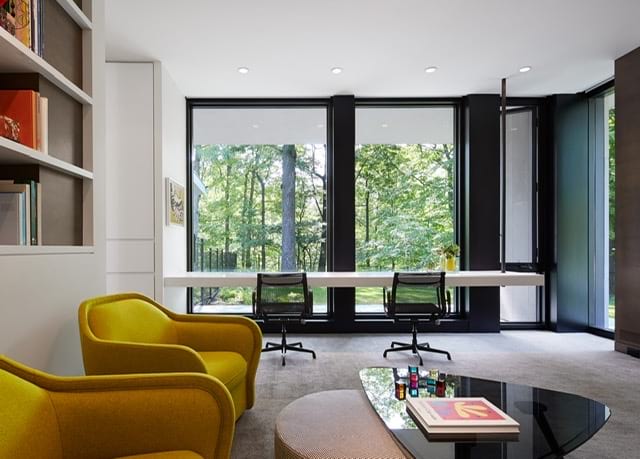
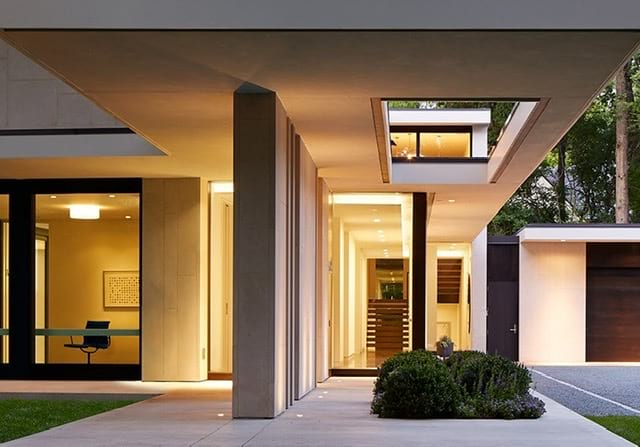
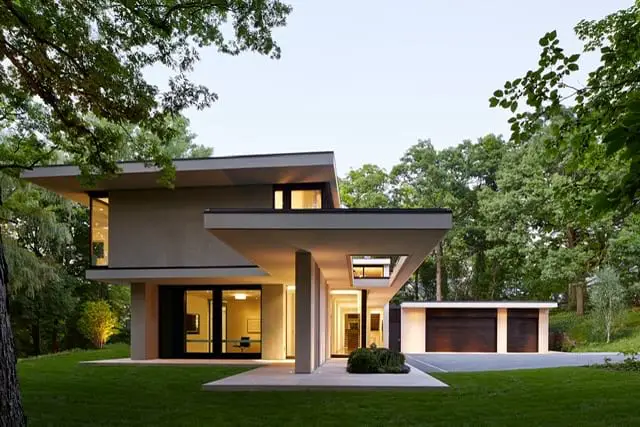
Which is your favourite/most important feature of this house and why?
We want our architecture to blend with and accentuate its natural surroundings. With tall trees extending from the ravine and floor-to-ceiling windows to highlight them, I love how the upper level feels like a treehouse.
The home’s beautiful ravine setting is fully integrated in the experience of the home. Whether the view is expansive or a narrow slot to frame a single tree, nature’s intrinsic beauty is comfortably woven into the movement of the home.
The house features a dramatic roofline and an interesting mix of materials and shapes. Can you tell us a bit about your inspiration?
Our goal was for the house to engage with the landscape by extending out into it, blurring the line between the physical structure and the outside. We wanted something natural that melded with and framed the ravine as if it were another piece of art in their collection.
That’s where the patterning and shapes of the windows came in. The front slot windows and limestone screen wall has a patterning that has the same irregularity as the trees on the opposite side of the house.
This dialog between nature and the built form should be in harmony with each one and enhance your perception of each.
Have you found any inspiration in the mid-century period while designing the house?
I’ve always been inspired by the midcentury period. For over 15 years, my husband and I lived in a 1930’s home designed by an architect, Henry Dubin. Dubin was influenced by Frank Lloyd Wright’s Unisonian homes.
The home’s warmth and connection to nature, always appealed to me and has certainly influenced our projects. Several features of that house — the corner glass windows, the flat roofs, the natural materials — are echoed in the Ravine house.
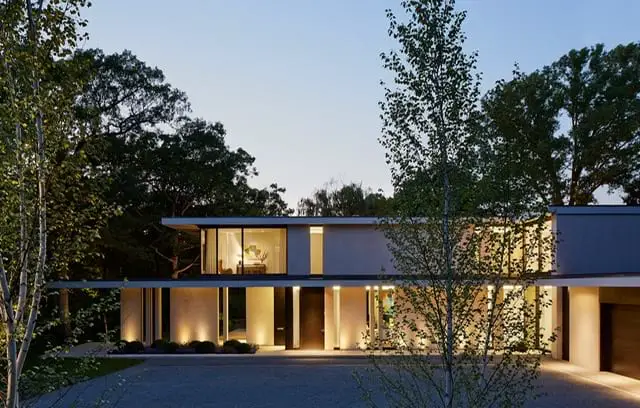
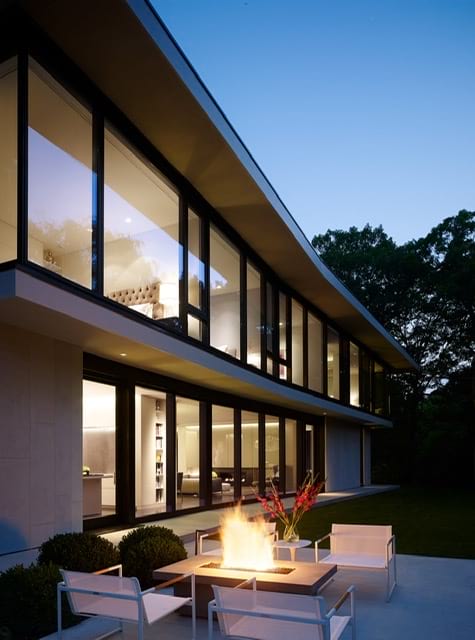
The modernist and mid-century aesthetic still inspires many contemporary architects. Why do you think this is the case?
Modernist ideas, such as open living, connection to nature, and architecture’s potential for sculptural form continue to be relevant in today’s home. The ability to design with balance, not symmetrical allows each family’s unique lifestyle to more freely shape the design.
Why do you think it’s important to continue producing houses and buildings that conform to modernist design principles?
I want a house to create a sense of calm, peace and serenity — things that are inherent in nature. We focus on the balance of materials and the scale of spaces to create homes that are a sanctuary.
When so many aspects of our lives require constant stress and engagement, we want the home to be a sanctuary and retreat. Modernist design principles bring this sense of warmth and livability that is timeless.
